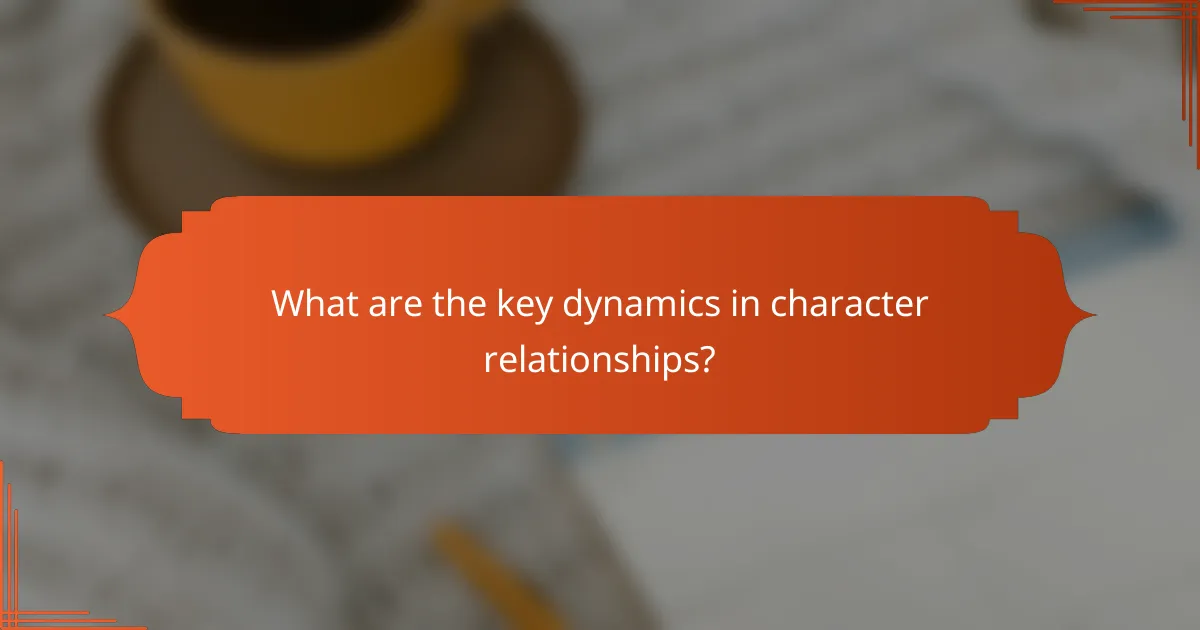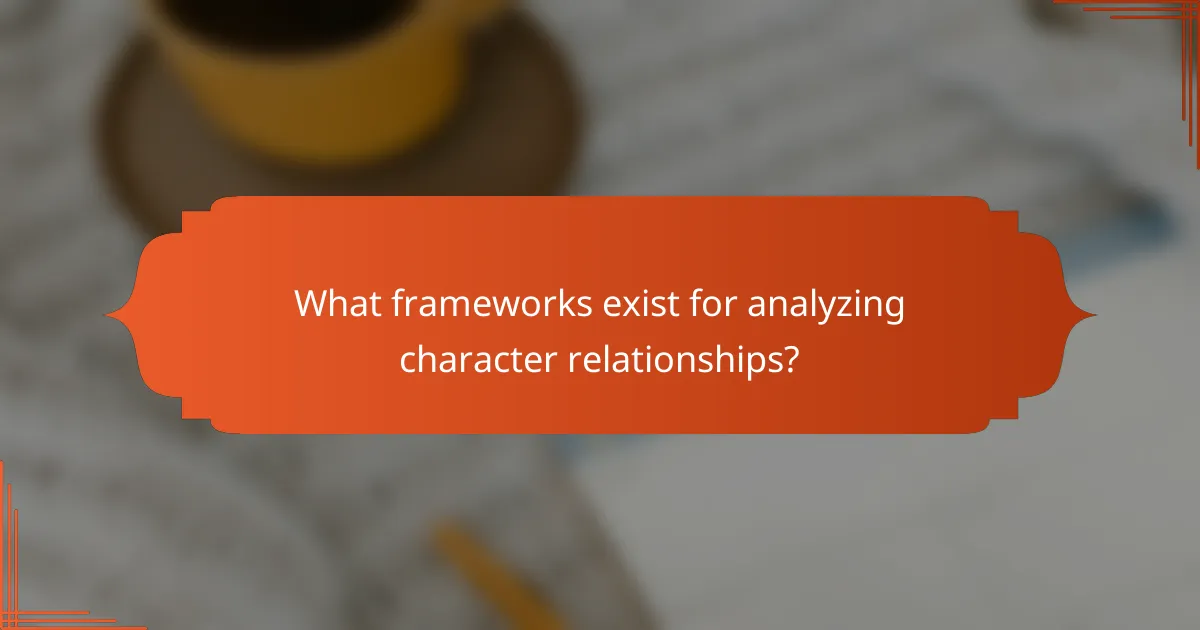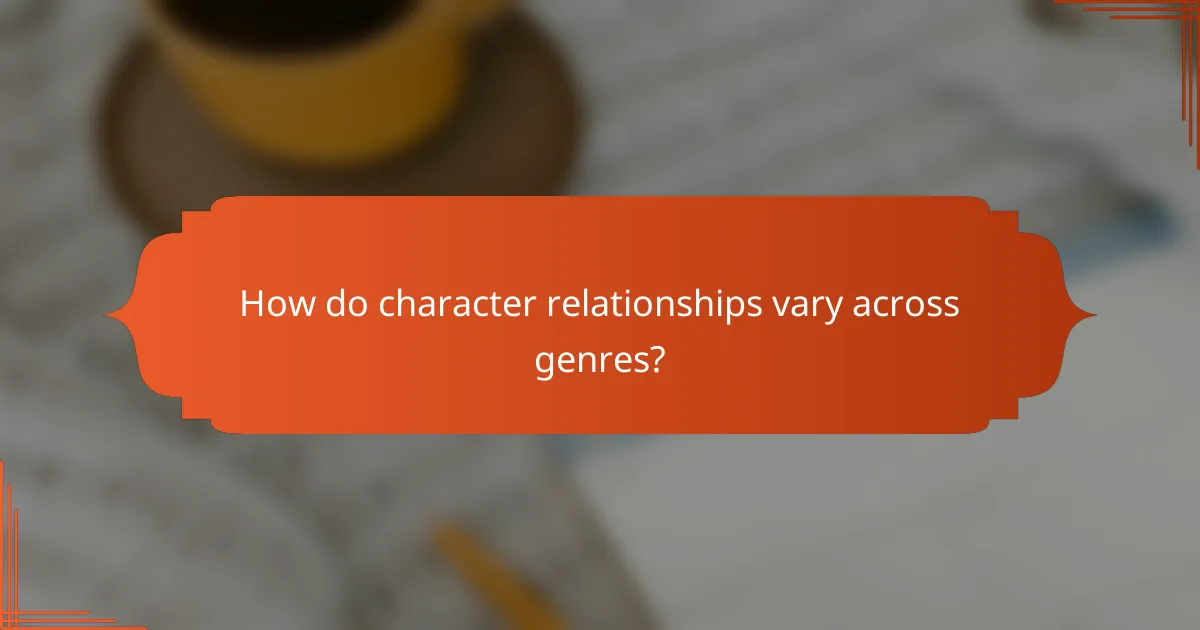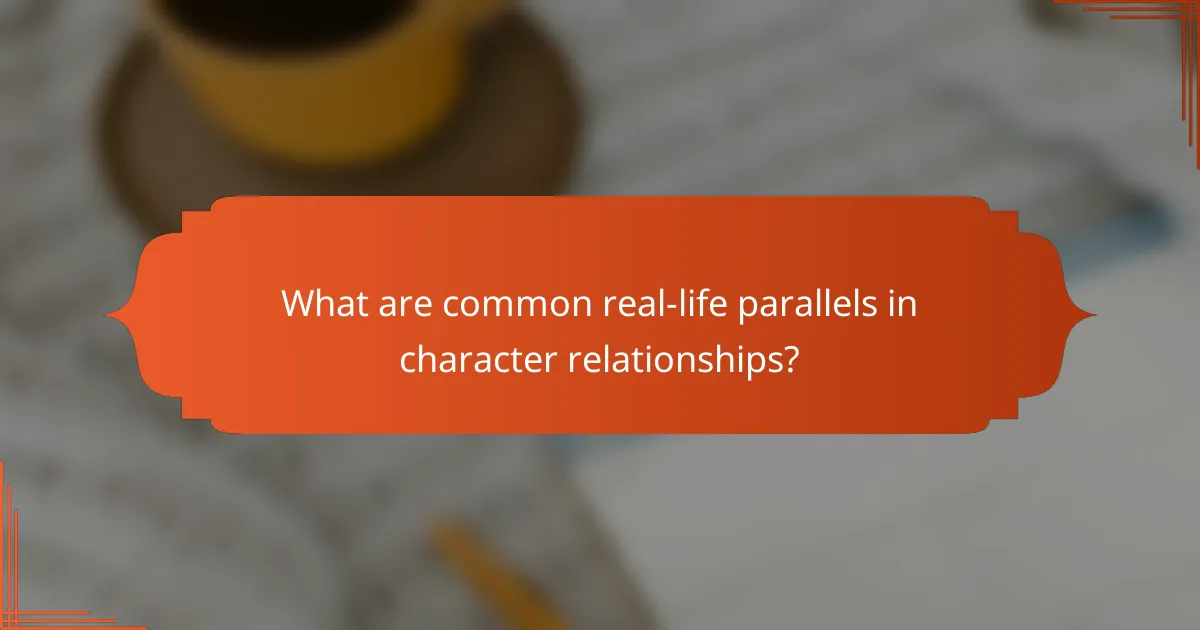Character relationships in literature serve as a reflection of real-life dynamics, illustrating the complexities of emotional bonds and social interactions. By examining these connections, readers can gain insights into human behavior and societal norms, enhancing their understanding of both fiction and reality. The interplay between characters not only drives plot progression but also deepens emotional engagement, making stories resonate on a personal level.

How do character relationships reflect real-life dynamics?
Character relationships in literature often mirror real-life dynamics by showcasing emotional bonds, social interactions, and personal growth. These connections can reveal underlying truths about human behavior and societal norms, making them relatable and impactful.
Emotional connections in literature
Emotional connections in literature serve as a reflection of the complex feelings people experience in real life. Characters often form deep bonds that resonate with readers, illustrating love, friendship, betrayal, and forgiveness. For example, the relationship between Elizabeth Bennet and Mr. Darcy in “Pride and Prejudice” highlights the struggles of miscommunication and personal growth.
These emotional ties can evoke empathy and understanding, allowing readers to explore their own feelings through the characters’ experiences. Strong emotional connections can also drive the plot, influencing characters’ decisions and actions.
Social dynamics in storytelling
Social dynamics in storytelling reveal how characters interact within their communities and the impact of societal structures on relationships. These dynamics can include power struggles, class differences, and cultural expectations. For instance, in “The Great Gatsby,” the social divide between East Egg and West Egg illustrates the complexities of wealth and status in shaping relationships.
Understanding these social dynamics helps readers grasp the motivations behind characters’ actions and the consequences of their relationships. Authors often use these elements to critique societal norms and provoke thought about real-world issues.
Character growth through relationships
Character growth through relationships is a crucial aspect of storytelling, as interactions with others can lead to significant personal development. Characters often face challenges that force them to confront their flaws, adapt, and evolve. For example, in “To Kill a Mockingbird,” Scout Finch learns valuable lessons about empathy and justice through her relationships with Atticus and Boo Radley.
To effectively illustrate character growth, authors can employ techniques such as dialogue, conflict, and resolution. Readers can identify with characters’ journeys, making the narrative more engaging and relatable. Recognizing the importance of relationships in character development can enhance both writing and reading experiences.

What are the key dynamics in character relationships?
Key dynamics in character relationships include the ways characters interact, influence each other, and navigate their emotional landscapes. Understanding these dynamics helps in analyzing the depth and complexity of relationships, whether in fiction or real life.
Conflict and resolution
Conflict is a natural part of character relationships, often arising from differing goals, values, or misunderstandings. Effective resolution involves communication, empathy, and compromise, allowing characters to grow and evolve. For instance, two friends may argue over a decision, but through open dialogue, they can reach a mutual understanding and strengthen their bond.
Common pitfalls include avoiding conflict altogether or resorting to unhealthy confrontation. Characters should aim to address issues constructively, fostering a sense of trust and collaboration.
Power dynamics
Power dynamics refer to the influence characters exert over one another, which can shift based on context and circumstances. These dynamics can manifest in various forms, such as authority, manipulation, or emotional control. For example, a mentor may hold power over a mentee, but this can change if the mentee gains new skills or insights.
It’s crucial to recognize these shifts in power, as they can affect the relationship’s balance. Characters should be aware of their influence and strive for equitable interactions to avoid resentment or dependency.
Interdependence and autonomy
Interdependence in character relationships highlights the balance between relying on one another and maintaining individual autonomy. Healthy relationships often involve a blend of support and independence, where characters can pursue their goals while being there for each other. For instance, a couple may support each other’s careers while also nurturing their personal interests.
Striking this balance can be challenging; characters must communicate their needs and boundaries clearly. Avoiding excessive reliance or isolation is key to fostering a sustainable relationship that respects both interdependence and personal freedom.

How can character relationships enhance storytelling?
Character relationships are crucial for enriching storytelling by driving emotional connections and plot progression. These dynamics create tension, conflict, and resolution, making narratives more engaging and relatable for audiences.
Driving plot development
Character relationships propel the plot by introducing conflicts and alliances that shape the story’s trajectory. For instance, a rivalry can lead to pivotal confrontations, while friendships may foster collaboration in overcoming obstacles.
Writers should consider how relationships evolve over time, as changes can create turning points in the narrative. A character’s betrayal or unexpected support can significantly alter the direction of the plot, keeping readers invested.
Building audience engagement
Engaging character relationships draw audiences into the story, making them care about the outcomes. When viewers or readers see characters navigate complex relationships, they are more likely to form emotional attachments, enhancing their overall experience.
To maximize engagement, writers can use relatable conflicts and resolutions that mirror real-life dynamics. By incorporating universal themes such as love, jealousy, or loyalty, stories resonate more deeply with audiences, fostering a stronger connection.
Creating relatable characters
Well-developed character relationships contribute to creating relatable characters that audiences can identify with. When characters experience realistic interactions, their struggles and triumphs become more meaningful.
Writers should focus on crafting authentic dialogues and scenarios that reflect genuine emotions. This approach not only makes characters more believable but also encourages readers to reflect on their own relationships, enhancing the narrative’s impact.

What frameworks exist for analyzing character relationships?
Several frameworks help analyze character relationships, focusing on their dynamics, motivations, and emotional connections. These frameworks provide tools for understanding how characters interact and evolve within narratives.
Character relationship mapping
Character relationship mapping visually represents the connections between characters, highlighting their interactions and emotional ties. This method often employs diagrams or charts to illustrate relationships, making it easier to identify key dynamics and conflicts.
To create a character relationship map, start by listing all characters and their relationships. Use lines to connect characters, labeling the nature of their interactions—such as friendship, rivalry, or romance. This visual tool can reveal underlying themes and help writers maintain consistency in character development.
Psychological theories in character analysis
Psychological theories provide a framework for understanding character motivations and behaviors. Concepts from psychology, such as attachment theory or Jungian archetypes, can be applied to analyze how characters relate to one another and what drives their actions.
For example, using attachment theory, one can explore how a character’s early relationships influence their current interactions. This analysis can deepen the portrayal of characters, making them more relatable and realistic. When applying psychological theories, consider the characters’ backgrounds and how these factors shape their relationships.

How do character relationships vary across genres?
Character relationships differ significantly across genres, shaped by the narrative’s focus and emotional stakes. Each genre employs distinct dynamics that influence how characters interact and develop throughout the story.
Romantic relationships in romance novels
Romance novels center on romantic relationships, often highlighting the emotional journey between two characters. These stories typically follow a predictable arc, including initial attraction, conflict, and eventual resolution, which reinforces the theme of love conquering obstacles.
Key elements in romance include chemistry, tension, and character growth. Readers expect relatable characters who face challenges that test their love, such as misunderstandings or external pressures. Successful romance novels often balance these elements to create satisfying resolutions.
Friendship dynamics in coming-of-age stories
Coming-of-age stories emphasize friendship dynamics, showcasing how relationships evolve as characters navigate personal growth and self-discovery. These narratives often depict the complexities of friendships, including loyalty, betrayal, and the impact of peer pressure.
Common themes include the transition from childhood to adulthood and the importance of support systems. Characters may face conflicts that challenge their bonds, ultimately leading to deeper understanding and maturity. Readers appreciate authentic portrayals of friendship that resonate with their own experiences.
Antagonistic relationships in thrillers
Thrillers often feature antagonistic relationships that drive the plot and create tension. The conflict between the protagonist and antagonist is central, with each character representing opposing forces that heighten suspense and stakes.
These relationships can be complex, with motivations that reveal deeper psychological aspects. Effective thrillers build tension through cat-and-mouse dynamics, where the protagonist must outsmart the antagonist. Readers are drawn to the intricacies of these relationships, as they often reflect real-life struggles against adversity.

What are common real-life parallels in character relationships?
Character relationships often mirror real-life interactions, showcasing dynamics that resonate with our experiences. These parallels can be observed in familial ties and friendships, both of which reveal underlying themes of loyalty, conflict, and emotional support.
Familial relationships
Familial relationships are foundational in shaping character dynamics, often reflecting the complexities of real-life family structures. These relationships can range from nurturing and supportive to strained and conflict-ridden, depending on individual circumstances and histories.
For example, sibling rivalry can be portrayed through competition for parental attention, while parent-child relationships might explore themes of expectation and independence. Understanding these dynamics can enhance character development and deepen audience engagement.
Friendship dynamics
Friendship dynamics often highlight the importance of trust, loyalty, and conflict resolution in character relationships. Friends can serve as confidants, challengers, or sources of support, mirroring the diverse roles friends play in our lives.
Consider the impact of betrayal in friendships, which can lead to significant character growth or conflict. Additionally, friendships may evolve over time, reflecting changes in priorities or life circumstances, which can add depth to character arcs and narratives.
